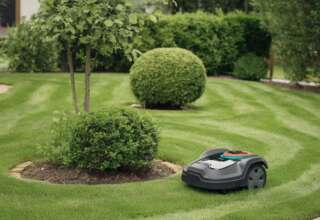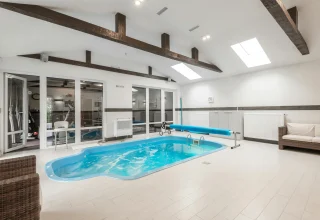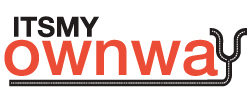As industries continue to evolve through digital transformation, building automation has become an essential component of operational efficiency and sustainability. Among the leaders in this technological shift is the Staefa control system, a pioneering solution known for its adaptability, smart integration, and intelligent energy management. This blog explores the historical development, features, and real-world advantages of Staefa control systems, along with insights into future trends shaping automation and smart building management.
From Simplistic Designs to Complex Sophistication
Tracing the Transformation of Control Mechanisms
Control systems began as simple analog devices focused primarily on ON/OFF operations and manual adjustments. These systems were effective for their time but lacked the responsiveness and flexibility required by modern enterprises. As automation demands grew, the industry witnessed a shift toward more dynamic systems that could adapt in real-time to changing conditions.
Digital integration emerged as the turning point, enabling enhanced communication between devices, sensors, and central control hubs. Today, systems not only perform tasks but also predict needs, self-adjust, and collect performance data. The Staefa control system embodies this shift, transforming basic operations into intelligent, interconnected processes.
Staefa’s Pioneering Impact on Smart Buildings
Redefining the Building Management Experience
Staefa has established itself as a cornerstone in intelligent building automation. By integrating HVAC, lighting, and energy systems, it streamlines how facilities function and improves occupant comfort. What sets Staefa apart is its commitment to efficiency and user-centric design, making it a go-to solution for smart infrastructure.
Through real-time monitoring, adaptive controls, and intuitive interfaces, Staefa empowers operators to make faster, better decisions. The result is not just automation, but an environment of intelligent operation, whether in office buildings, medical facilities, or industrial complexes.
Decoding the Capabilities: What Makes Staefa Stand Out?
Innovative Technologies: The Core of Staefa’s Control System
At the heart of every Staefa control system lies a suite of innovative technologies. IoT (Internet of Things) connectivity enables seamless data sharing across devices, while smart sensors collect real-time insights on environmental and operational conditions.
These technologies support predictive analytics, helping facility managers anticipate problems before they happen. This proactive approach prevents costly downtimes, reduces maintenance needs, and increases overall reliability. Staefa systems are not just reactive—they are forward-thinking and intuitive.
Enhanced Energy Optimization Through Smart Sensing
Energy efficiency is central to Staefa’s design. The system continuously monitors factors such as occupancy levels, temperature, and humidity, adjusting energy consumption accordingly. These smart adjustments ensure optimal usage without sacrificing comfort or productivity.
In a time when sustainability is not just a goal but a business imperative, Staefa enables companies to reduce their carbon footprint while saving on utility bills.
Integration and Interfaces: A Seamless Fit
Effortlessly Adapting to Existing Infrastructures
A major strength of the Staefa control system is its integration flexibility. Unlike many automation solutions that require a full system overhaul, Staefa systems are designed to work alongside both legacy infrastructure and new technologies.
This plug-and-play adaptability ensures minimal disruption during implementation and promotes long-term scalability. Businesses can grow and adapt their systems over time without having to reinvest in completely new hardware or software solutions.
Supporting a Modular Approach
Staefa systems also offer modular expansion, allowing businesses to start small and scale based on evolving needs. This modularity ensures that companies can remain competitive and up-to-date with technological advancements without straining their budgets.
Unlocking Productivity: Real-World Advantages of Staefa
Cost-Effectiveness: A Direct Boost to the Bottom Line
For many companies, budget limitations hinder the pursuit of automation. However, the Staefa control system provides an affordable pathway to advanced functionality. Its intelligent analytics optimize energy usage, reduce waste, and allow for predictive maintenance—all of which contribute to significant cost savings.
By lowering the frequency and severity of breakdowns, businesses can better allocate their resources toward growth, innovation, and customer satisfaction.
Enhanced Maintenance Planning
Staefa’s predictive capabilities allow facilities to anticipate system issues before they escalate into costly repairs. This proactive approach streamlines maintenance schedules and ensures uninterrupted operation, minimizing financial disruptions and safety risks.
Driving Sustainability: Energy Management Made Smart
Smarter Energy Use and Compliance
As environmental concerns grow, so does the importance of energy-efficient systems. The Staefa control system helps businesses implement sustainable practices through:
- Real-time energy monitoring
- Load balancing and demand response
- Usage-based equipment controls
These features not only lower operational costs but also help companies earn green certifications like LEED or ISO 50001.
Brand Reputation and Consumer Trust
Consumers are increasingly prioritizing environmentally responsible businesses. By using Staefa’s energy optimization features, companies can showcase their commitment to sustainability, boosting their reputation and strengthening stakeholder relationships.
Case Studies Highlighting Success: Staefa in Action
Transforming Commercial Real Estate
One high-rise office complex implemented a Staefa control system to monitor HVAC usage and lighting. Over 12 months, they reported a 30% drop in energy expenses. Staefa’s ability to adjust systems based on real-time occupancy data was pivotal in optimizing performance and reducing unnecessary energy use.
Advancing Healthcare Efficiency
Medical clinics face stringent operational requirements. A series of clinics equipped with Staefa systems reported not only energy savings but also improvements in air quality and patient comfort. Predictive analytics helped manage indoor conditions precisely—vital for recovery environments and infection control.
The Future of Automation: What’s Next for Staefa?
AI-Driven Automation and Smart Cities
As AI continues to shape automation, Staefa systems are poised to become even more autonomous. Future iterations may incorporate:
- Deep learning for behavior prediction
- Personalized controls for users in commercial and residential buildings
- Broader integration with smart city infrastructures
These advances could further reduce operational costs and improve quality of life.
Security and Ethical Considerations
While increased automation brings many benefits, it also raises questions about data privacy and system vulnerabilities. Centralized controls and always-connected devices must be secured against cyber threats. Staefa’s ongoing investments in cybersecurity and compliance help mitigate these concerns, ensuring safe and ethical implementation.
Conclusion: Embracing the Future with Staefa Control Systems
In a world that demands both operational excellence and environmental responsibility, the Staefa control system provides a robust, scalable, and sustainable solution. From energy optimization to predictive maintenance and seamless integration, Staefa has redefined what intelligent building management can achieve.
As automation evolves, systems like Staefa will not just manage facilities—they will help shape smarter, greener, and more efficient futures. For businesses aiming to stay ahead, investing in Staefa is not just an upgrade; it’s a strategic move toward long-term growth and innovation.











